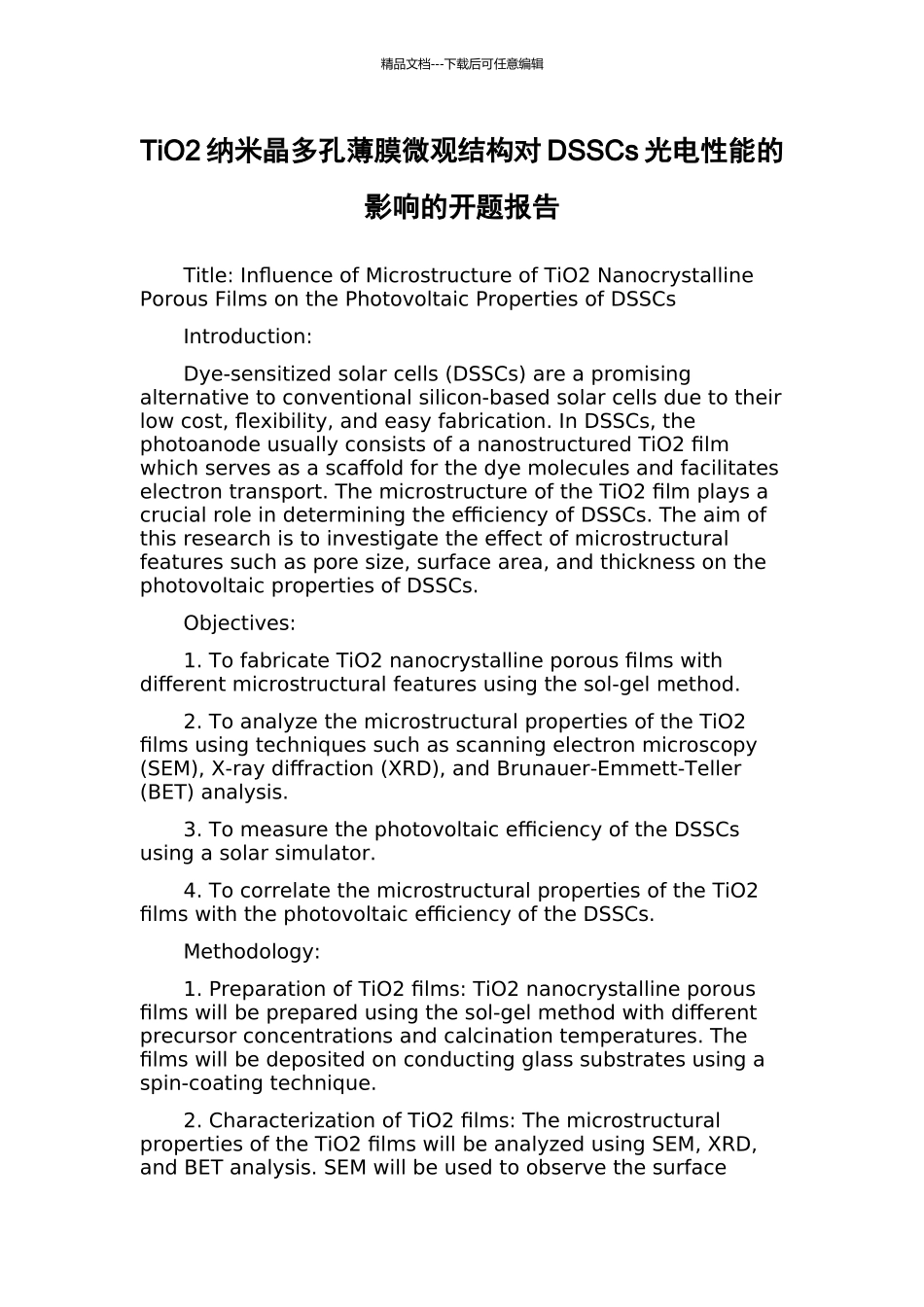精品文档---下载后可任意编辑TiO2 纳米晶多孔薄膜微观结构对 DSSCs 光电性能的影响的开题报告Title: Influence of Microstructure of TiO2 Nanocrystalline Porous Films on the Photovoltaic Properties of DSSCsIntroduction: Dye-sensitized solar cells (DSSCs) are a promising alternative to conventional silicon-based solar cells due to their low cost, flexibility, and easy fabrication. In DSSCs, the photoanode usually consists of a nanostructured TiO2 film which serves as a scaffold for the dye molecules and facilitates electron transport. The microstructure of the TiO2 film plays a crucial role in determining the efficiency of DSSCs. The aim of this research is to investigate the effect of microstructural features such as pore size, surface area, and thickness on the photovoltaic properties of DSSCs.Objectives: 1. To fabricate TiO2 nanocrystalline porous films with different microstructural features using the sol-gel method.2. To analyze the microstructural properties of the TiO2 films using techniques such as scanning electron microscopy (SEM), X-ray diffraction (XRD), and Brunauer-Emmett-Teller (BET) analysis.3. To measure the photovoltaic efficiency of the DSSCs using a solar simulator.4. To correlate the microstructural properties of the TiO2 films with the photovoltaic efficiency of the DSSCs.Methodology: 1. Preparation of TiO2 films: TiO2 nanocrystalline porous films will be prepared using the sol-gel method with different precursor concentrations and calcination temperatures. The films will be deposited on conducting glass substrates using a spin-coating technique.2. Characterization of TiO2 films: The microstructural properties of the TiO2 films will be analyzed using SEM, XRD, and BET analysis. SEM will be used to observe the surface 精品文档---下载后可任意编辑morphology and pore size distribution of the films. XRD will be used to identify the crystalline structure of the films. BET analysis will be used to determine the specific surface area and pore volume of the films.3. Fabrication of DSSCs: The TiO2 films will be sensitized with a dye molecule and assembled into DSSCs. A platinum counter electrode and an electrolyte will be used to complete the cell.4. Photovoltaic characterization: The photovoltaic efficiency of the DSSCs will be measured using a solar simulator. The current-voltage (I-V) characteristics of the cells will be recorded and used to calculate the power conversion efficiency.Expected Results: It is expected that the microstructural properties of the TiO2 films will have a significant impact on the photovoltaic efficiency of the DSSCs. TiO2 films with a higher surface area and pore volume are expected to lead to a higher photovoltaic efficiency. The results of this research can provide useful insights into the optimization of the microstructure of TiO2 films for the development of highly efficient DSSCs.

